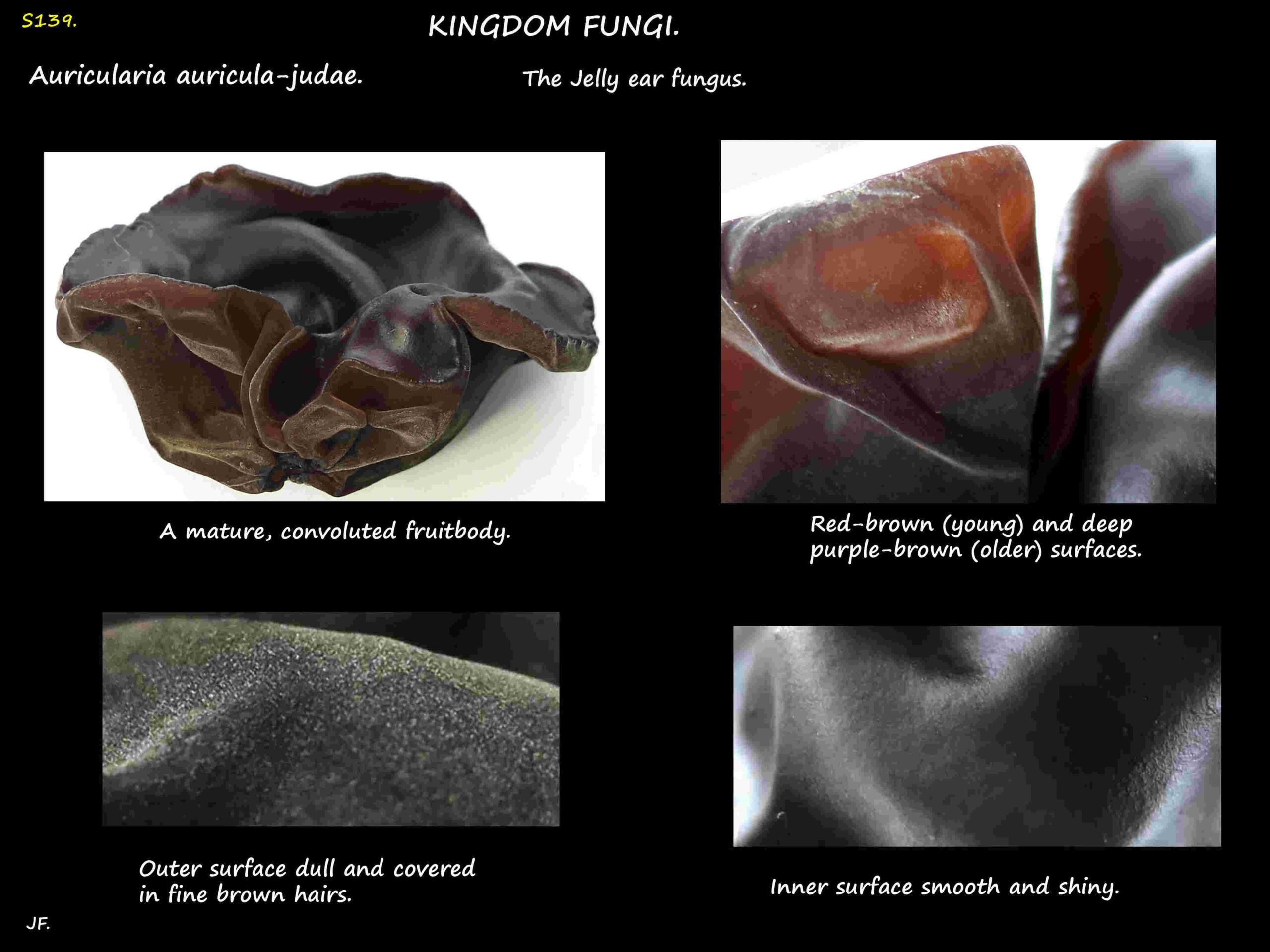Jelly or Gelatinous fungi – Auricularia.
A descriptive terms for a number of species which all have a gelatinous appearance and consistency.
They are primitive forms and almost all occur in 3 orders of the Basidiomycota – the Auriculariales,
the Dacrymycetales and the Tremellales.
The jelly-like texture is because the cell walls of the hyphae, instead of being rigid, are diffuse with the
hyphae and basidia in a gelatinous material.
In dry weather the structure collapses but expands again in wet conditions.
The basidia lie mostly within the gelatinous body with just the tips protruding to release the spores.
The spore bearing layer is on the under surface.
They are a diverse group ranging from thin crusts to irregular 3 dimensional shapes and many are hard
to tell apart without microscopy.
Also, some Ascomycetes have a gelatinous appearance.
Auriculariales.
Basidiomycota > Class Agaricomycetes > Order Auriculariales.
There are bout 200 species in 7 families including around 20 genera not yet in families.
All species are probably saprophytic on dead wood and a few are cultivated.
Fruit bodies may be solitary but are usually in groups.
The typically tough fruit bodies are cup or ear shaped or sometimes lobed.
The upper surface is red-brown often with tiny greyish hairs.
There may be folds or wrinkles in the upper surface.
The lower, spore-bearing surface is paler and may be smooth or slightly wrinkled.
A few species have flattish fruit bodies like a corticoid fungus or are club-shaped.
Auricularia auricula-judae.
The Jelly ear fungus.
Basidiomtycota > Class Agaricomycetes > Order Auriculariales.
A cultivated, edible mushroom that grows on dead wood.
The gelatinous fruit body is usually 4 – 8 cm across and cup-shaped or convoluted like an ear.
The red-brown colour darkens with age to a deep purple-brown.
It is somewhat translucent.
The outer surface is smooth when young but as it ages it developes folds, appears dull and
may be covered with fine, brown hairs.
The inner surface is smooth and shiny.
J.F.


